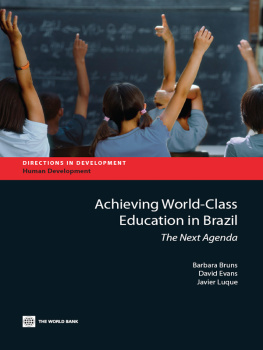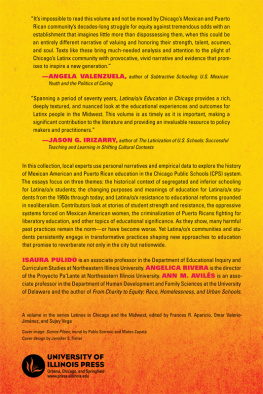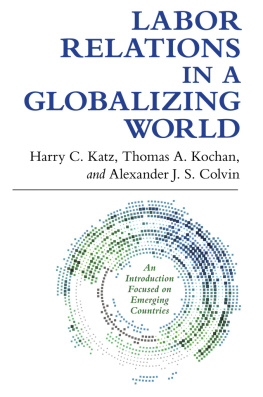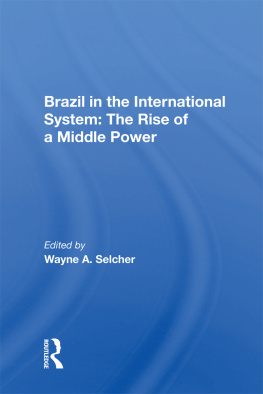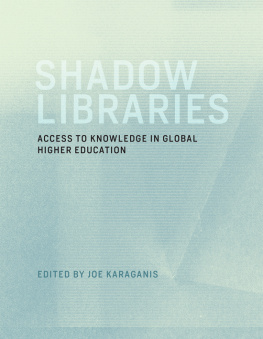Achieving World-Class
Education in Brazil
2012 The International Bank for Reconstruction and
Development / The World Bank
1818 H Street NW
Washington DC 20433
Telephone: 202-473-1000
Internet: www.worldbank.org
All rights reserved
1 2 3 4 15 14 13 12
This volume is a product of the staff of the International Bank for Reconstruction and Development / The World Bank. The findings, interpretations, and conclusions expressed in this volume do not necessarily reflect the views of the Executive Directors of The World Bank or the governments they represent.
The World Bank does not guarantee the accuracy of the data included in this work. The boundaries, colors, denominations, and other information shown on any map in this work do not imply any judgement on the part of The World Bank concerning the legal status of any territory or the endorsement or acceptance of such boundaries.
Rights and Permissions
The material in this publication is copyrighted. Copying and/or transmitting portions or all of this work without permission may be a violation of applicable law. The International Bank for Reconstruction and Development / The World Bank encourages dissemination of its work and will normally grant permission to reproduce portions of the work promptly.
For permission to photocopy or reprint any part of this work, please send a request with complete information to the Copyright Clearance Center Inc., 222 Rosewood Drive, Danvers, MA 01923, USA; telephone: 978-750-8400; fax: 978-750-4470; Internet: www.copyright.com.
All other queries on rights and licenses, including subsidiary rights, should be addressed to the Office of the Publisher, The World Bank, 1818 H Street NW, Washington, DC 20433, USA; fax: 202-522-2422; e-mail: .
ISBN: 978-0-8213-8854-9
eISBN: 978-0-8213-8855-6
DOI: 10.1596/978-0-8213-8854-9
Library of Congress Cataloging-in-Publication data have been requested.
Cover photo: erproductions/Blend Images/Corbis
Achieving World-Class
Education in Brazil
The Next Agenda
Barbara Bruns, David Evans and Javier Luque
Contents
| Foreword |
| Acknowledgments |
| About the Authors |
| Abbreviations |
| Executive Summary |
| Chapter 1: | Brazilian Education 19952010: Transformation |
| Education Finance Reform |
| Measuring Results |
| Reducing Schooling Costs for Poor Children |
| Federal Oversight |
| Conclusion |
| Chapter 2: | Brazilian Basic Education: Meeting the Challenge? |
| Meeting the Needs of a 21st Century Economy |
| Reducing Inequality and Poverty |
| Transforming Spending into Learning |
| Conclusion |
| Chapter 3: | Brazilian Basic Education 20112021: The Next Agenda |
| Building Better Teachers |
| Strengthening Early Childhood Education |
| Schooling a 21st Century Workforce: Raising Quality in Secondary Education |
| Maximizing Federal Impact and Capitalizing on Brazils Education Action Lab |
| References |
| Annex 1. | Delivering Results for Children in Rios Favelas: Escola Municipal Affonso Varzea |
| Annex 2. | Delivering Results for Children in Northeast Brazil: Pernambuco Escola Estadual Tom Francisco |
| Annex 3. | Access to and Quality of Early Childhood Development in Brazil Compared with the OECD and LAC Countries |
| Annex 4. | Global Evidence on Universal Versus Targeted Early Childhood Development Coverage |
| Annex 5. | Skills Composition in the Brazilian Labor Market |
| Annex 6. | Tables |
Boxes
| 1. | Avoiding Perverse Incentives: Brazils Index of Basic Educational Quality |
| 2. | Basic Numeracy as Measured on PISA |
| 3. | Evaluating the Impact of So Paulos Prova de Promoo |
| 4. | Holding Teachers Accountable for Performance: Washington D.C.s IMPACT Program |
| 5. | The U.S. Race to the Top Program |
Figures
| 1. | Primary Education Enrollment by Provider, 19902009 |
| 2. | FUNDEF/FUNDEB Expenditures, 19982010 |
| 3. | Cognitive Skills and Economic Growth Across Regions |
| 4. | Cognitive Skills and Economic Growth Across Countries |
| 5. | PISA 2009 Math Scores, All Countries |
| 6. | Brazils PISA Math Performance, 20002009 |
| 7. | Comparative PISA Math Proficiency, 2009 |
| 8. | Math Proficiency on SAEB/Prova Brasil, 19952009 |
| 9. | Share of Students by Proficiency Level, Reading and Math, PISA 20002009 |
| 10. | Change in Average Educational Attainment in Brazil, 19932009 |
| 11. | Shifts in Real Wages for Workers by Years of Schooling, 19932009 |
| 12. | Changing Demand for Skills in the U.S. Economy, 19591999 |
| 13. | Changes in Brazils Occupational Structure, 19802009 |
| 14. | Evolution of Skills in the Labor Force: United States and Brazil, 19812009 |
| 15. | Skills Evolution in the Top Two Quintiles of the Brazilian Labor Force, 19812009 |
| 16. | Regional Trends in Educational Attainment, 19932009 |
| 17. | Educational Attainment by Region, 2009 |
| 18. | Educational Attainment for Urban and Rural Populations, 2009 |
| 19. | Fourth-Grade Math Performance by Region, 19992009 |
| 20. | Educational Attainment of 20-Year-Olds Compared with Their Household Heads, 19932009 |
| 21. | Years of Schooling Completed and PISA Math Performance by Household Income Quintile |
| 22. | Cost-Effectiveness of Alternative Education Programs |
| 23. | Consolidated Education Spending, 20002009 |
| 24. | Public Expenditure on Education as a Percentage of GDP in OECD Countries and Brazil, 2007 |
| 25. | Projected Evolution of Schooling Cohorts, 19902025 |
| 26. | Spending per Student at Different Levels Relative to Unit Costs in Primary Education, 2007 |
| 27. | Average Class Size by Level of Education, 2008 |
| 28. | Comparative PISA Math Performance of Prospective Teachers and Engineers |
| 29. | Cognitive Development of Children Aged 3672 Months in Ecuador |
| 30. | Distribution of Crches and Preschools in Brazil by Quality |
Tables
| 1. | Average Years of Schooling Completed by the Adult Population in Selected Countries, 19602010 |
| 2. | Secondary Education Gross Enrollment Ratio in Selected Countries, 19902008 |

